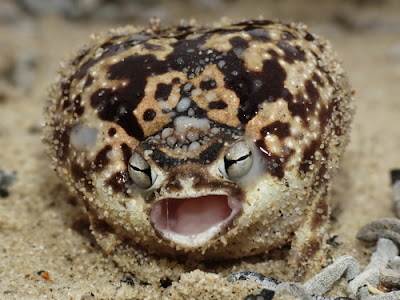Hey look, the rare Asian whattheheckisthat.
Ever since my uncle caught one on a fishing hook, effectively pissing it off, I'll always remember softshell turtles as some of the oddest-looking turtles in existence.
"Evolution screwed me over."
All softshell turtles belong to huge family Trionychidae, and we'll be splitting this post into the two subfamilies: Cyclanorbinae and Trionychinae.
----------------------Cyclanorbinae----------------------
Cyclanorbines constitute the smaller subfamily of softshells, with only three genera classified under it: Cyclanorbis, Lissemys, and Cycloderma. Though cyclanorbines is rather fun to say, they are more commonly referred to as the flapshell turtles due to the flaps of the skin at the hind end of the shell.
- Cyclanorbis
- C. senegalensis, the Senegal flapshell is the most common of the genus, found in 15 different African countries, appropriately including Senegal. It reaches a length of 35cm.
- C. elegans, the Nubian flagshell is less common, found in seven African countries, also appropriately in the Nubian region of the Nile.
- Cycloderma
- C. aubryi, the Aubry's flapshell turtle is one of the five species of softshells in Africa, including the two above. It is found mainly in the broad Congo region and is often sold commercially as bushmeat.
- C. frenatum, the Zambezi flapshell turtle (alternatively the Zambezi softshell terrapin) is aptly found in mainly the Zambezi basin. Like all softshells, they are mostly carnivores. Zambezi flapshells dig nests similar to that of a crocodile's. They commonly reach 20in and 30lb.
- Lissemys
- L. punctuata, the Indian flapshell turtle is not only restricted to India but is also found in Bangladesh, Pakistan, Myanmar, Sri Lanka, and Nepal. It also been introduced to the Andaman and Nicobar Islands. It is probably the most well-known and most researched of the flapshells.
- L. scutata is more commonly known as the Burmese flapshell turtle. Also found in Thailand and possibly China, some believe it to be a subspecies of the Indian flapshell turtle.
- L. ceylonensis, the Sri Lankan flapshell. Not much info is available.
A Zambezi flapshell screaming how he'd rather be a snapping turtle.
None of the images belong to the author.

.jpg)








.jpg)



















1.JPG)




